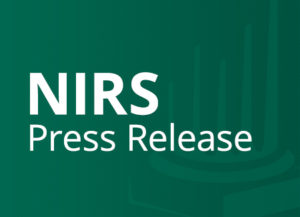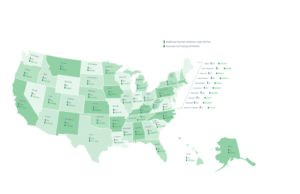The Three Rs of Teacher Pension Plans: Recruitment, Retention, and Retirement finds that pensions play a critical role in school effectiveness and save money by reducing teacher turnover costs.
PENSIONS IMPROVE QUALITY OF U.S. PUBLIC EDUCATION SYSTEM, REDUCE TURNOVER COSTS Pensions Help Retain 22,000 Teachers, Save $273 Million Nationally
Webinar to review the finding scheduled for Monday, October 31, 2011, at 11 AM ET. Register athttps://www2.gotomeeting.com/register/467865570. Dial In: (215) 383-1016, Access Code: 142-412-219, Audio PIN: Shown after joining the webinar.
OCTOBER 31, 2011, Washington, D.C. — A new study analyzing the effectiveness of defined benefit (DB) pensions on teacher retention and productivity finds that pensions play a critical role in recruiting and retaining highly productive teachers. This increases each school’s level of effectiveness, thereby benefiting students. Additionally, DB pensions save school districts money by reducing expensive teacher turnover costs.
More specifically, the new study, Three Rs of Teacher Pension Plans: Recruitment, Retention, and Retirement, finds that:
- Teacher effectiveness increases with experience. Education policy literature finds that teacher productivity increases sharply within the first few years of teaching. Thus, the more retention that among mid- career teachers, the more that the average teacher productivity within a school will increase.
- The cost of teacher turnover is quite high, both in terms of financial cost and loss of productivity to the school district. Additionally, public school teachers turn over less than private school teachers, largely due to their compensation, including pension benefits.
- DB pension plans help to recruit high quality teachers, and to retain highly productive teachers longer, as compared with defined contribution (DC) individual retirement accounts.
- In 2003, DB pensions helped to retain and additional 22,000 teachers nationwide. Because longer tenured teachers are more effective teachers, the increased retention that DB pensions bring increases the overall quality of public education.
- Because the cost of teacher turnover is substantial, the retention effects of DB pension plans also save school districts money. In 2003, DB pensions saved school districts $273.2 million nationally in teacher turnover costs.
Ilana Boivie, report author and economist with the National Institute on Retirement Security, said, “Education policy literature is clear: teachers become more effective as they gain experience. Research also shows that DB pension benefits, which provide a modest, reliable income in retirement, are an essential tool for retaining these highly effective teachers. Moreover, pensions help reduce the high cost of teacher turnover to school districts and taxpayers. These cost savings are a particularly important consideration for state and local policymakers striving to improve education, yet continuing to struggle with highly strained budgets.”
The study is available at www.nirsonline.org, and provides state-specific data including teacher turnover cost savings associated with pensions, as outlined in the map below. Click through for a larger image.
A webinar is scheduled for October 31, 2011, at 11 AM ET to present findings. To register, please visit https://www2.gotomeeting.com/register/467865570 . Dial In: (215) 383-1016. Access Code: 142-412-219. Audio PIN: Shown after joining the webinar.
Download the research here.
Download the research PowerPoint here.
About NIRS The National Institute on Retirement Security is a not-for-profit, non-partisan organization established to contribute to informed policymaking by fostering a deep understanding of the value of retirement security to employees, employers, and the economy through national research and education programs. Located in Washington, D.C., NIRS has a diverse membership of organizations interested in retirement security including financial services firms, retirement plan sponsors and service providers, and trade associations among others. More information is available www.nirsonline.org.

